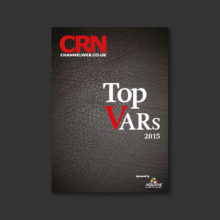Within the B2B environment, thought leadership has become a vital tool. It can help to establish you as the ‘go-to’ company in your marketplace – be it for prospects, clients, referral sources and even competitors. If executed effectively, a well-designed thought leadership programme can help you gain access to hard-to-reach decision makers and most importantly, allow you to profit from increased sales.
Over the last few years we’ve worked with numerous B2B companies on building and executing go-to-market strategies. As a result we understand the importance of a compelling thought leadership programme as a vital exponent in establishing a strong market position. Based on our experiences we developed our ‘From Thought Leadership to Revenue’ framework. This article – exploring the reasons why thought leadership has become so important – is the first in a series that will look at why it matters, how to get it right, what to avoid, and most importantly, how to turn your insights and opinions into profitable sales.
Over the last decade some fundamental changes have taken place, in the way B2B buyers behave and the expectations they have of their suppliers. To remain successful suppliers need to adopt new approaches – offering insights and opinions on the issues that are keeping their customers awake at night, rather than lists of product features and benefits. In a study by the Economics Intelligence Unit, 58% of B2B marketing executives stated “Positioning our company as a thought leader” as one of their top objectives.
There are a number of compelling reasons why thought leadership has assumed increased importance for B2B suppliers. If you’re not currently utilising thought leadership as part of your approach you need to think about whether these apply to your market.
B2B buyers don’t need suppliers to learn about products and technology any more, they have unprecedented access to information to help them research solutions, rank options, set requirements, benchmark pricing and so forth, without ever speaking to a supplier. Research has shown that they are typically 60% along a purchase decision before engaging with suppliers.
Prospects want perspective and insight, not a product pitch. Senior execs are still willing to engage with providers, but only those who can offer new ideas and interesting opinions which challenge their own thinking and highlight problems they might not yet have thought of. To open their doors you need to push the boundaries of established market thinking and position yourself as an expert on relevant, urgent and current client issues.
Buyers are no longer as susceptible to the traditional push marketing techniques of direct mail, telemarketing, brochures, catalogues and above the line advertising. You need distinctive, relevant content to capture buyers’ attention in the places they ‘hang out’. Online communities have significantly grown in importance as customers visit them to learn, share ideas and real-world experiences, seek out opinions and sanity check their own purchasing decisions. You need to ensure you focus your efforts on providing the content they seek out in these communities. It is no longer possible to ignore this communication channel; it will only continue to grow in importance.
The B2B decision making process is often long and complex and involves multiple people looking at problems from different viewpoints. What these stakeholders all seek is an expert they can trust, a company that can demonstrate the knowledge and perspective to help them navigate the path to the right decision. Good thought leadership content can help build a consensus among customer stakeholders and accelerate the sales process.
Responding to RFPs is not the way to build a highly-profitable business. If the first time you’ve had visibility of an opportunity is because the RFP has landed on your desk, you are unlikely to win the business at a healthy margin. Perceived thought leaders have the opportunity to engage with customers outside of the formal procurement cycle, enabling them to demonstrate their ‘value-add’ and increasing their chances of protecting margins.
Being perceived as a thought leader gets you in the game. When the ITSMA asked buyers about the importance of thought leadership in creating their supplier shortlists, an impressive 88% said it was important or critical, a 30% increase in a 12 month period. In today’s B2B environment, if you’re not perceived as offering insight and leadership, you may not even get visibility of the deals you’re missing out on.
Becoming the go-to-expert in your field through your thought leadership content isn’t going to happen overnight. Significant effort will be required – executive commitment, company-wide involvement and a dogged desire to fundamentally understand your industry, customers and the current problems affecting you all. However given the shifts that have taken place in the B2B landscape the alternative could well be irrelevance, or worse.
That’s why so many companies, in a broad range of sectors, are investing significant chunks of their marketing budget in thought leadership programmes. Examples range from IBM’s Smarter Planet programme, to PwC’s Global Survey on Growth, to DuPont’s colour trends report. Those that make it work can reap real benefits.
And it’s not just established blue-chips that can use thought leadership successfully. When salesforce.com first launched its groundbreaking, web-based CRM product in 1999 it was going up against a raft of larger, well-established competitors such as Siebel and Oracle – not to mention potential objections from prospective buyers about the wisdom of storing all their valuable customer data on someone else’s servers.
Salesforce tackled the problem by changing the terms of the debate. Rather than focusing on the functionality of its product, its communications were focused on challenging people’s preconceptions of how software should be delivered and consumed. The campaign ran under the provocative tagline ‘No Software’. Salesforce.com founder Marc Benioff had a clear vision for the future of the IT industry and his point of view permeated all of the company’s marketing efforts.
14 years later, Salesforce.com is the world’s largest CRM company, with revenues predicted at $5bn, and SaaS – or cloud-based software- is well on its way to becoming the dominant model for software delivery.
This blog is part of our recently published guide, ‘From Thought Leadership to Revenue.’ To download the full guide, please click here. Alternatively, if you would like to discuss how OneGTM can help you implement a thought leadership led marketing approach, please call us on 020 3693 1211



